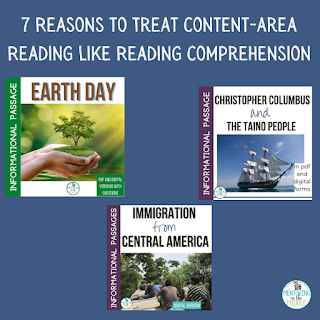Science and Reading and Math.
Art and Reading (and Math)
STEM and pretty much anything.
Have you wanted to infuse more blended learning into your classroom, but you weren't sure how? Check out these steps that will help you navigate blending subjects easily.
1. Students should think deeply about what they're reading.
The fact that it's Social Studies or Science, for example, doesn't preclude students from analyzing text structure, vocabulary, or author's purpose.
2. Activate Prior Knowledge
It's especially important to level the playing field for all students. Make sure everyone understands important aspects of the topic so that comprehension is readily available. Help students figure out text structure if that's not something that comes easily to them yet.
3. Pre-teach Vocabulary
Take a look at difficult vocabulary words, especially Tier-2 words that will help them better understand the content. Depending on your teaching style and the number of words, you could discuss a few with the whole class. Have more? Create small groups or partner-work and have them teach other students. Or make a booklet of words and pictures. That's easyDo your students struggle with language? Give them a short list of the most important vocabulary words with definitions. Maybe pictures.
4. Picture-walk (if there are pictures) or screen the text
Have students work on this independently or with a partner. What stands out for them? It might be words, pictures, captions, or writing style.
Or guide their initial screening with a question: What's the predominant text structure the author uses? Why do you think the author wrote this passage?
5. Have students annotate
Reading along or with a partner, have students annotate on the copy (if they can) or on sticky notes (if they can't.) What raised questions for them? What did they notice that didn't strike them in the first screening? What questions were answered? What new questions were generated?
6. Introduce a concept you want them to look for.
This can be content or comprehension related or both. Take your time and include additional instruction if needed. Work with small groups to make sure they understand what they're reading and how to look for the information you want them to capture.
7. Have students demonstrate their understanding
A quiz is one option, but certainly not the only one. You can get pretty creative here, depending on the content. Students can teach the class or small groups. They can write letters or emails, magazine articles (using the same text structure as the author?) make videos, create games or activities. The list is endless!
Can't plan another thing?
Here are some ready-made topics for you:



No comments
Post a Comment